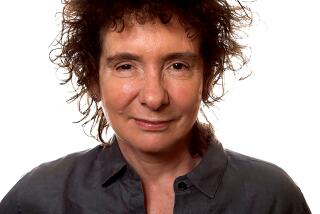Connected by Forces Beyond Our Grasp
- Share via
“Old Souls, the Scientific Evidence for Past Lives,” (Simon & Schuster) shows what happens when a skeptical reporter tacks down a slippery subject. It would take a big box to hold the author’s notes from the case studies, expert opinions and personal observations he has gathered. It amounts to specific possibilities but no absolute proof.
Author Tom Shroder is also the editor of the Sunday style section of the Washington Post. An article he wrote about reincarnation in 1988 left him unconvinced, but it led him to Dr. Ian Stevenson who investigates past-life claims in an unusual way. He looks at the spontaneous memories of children who have described intimate details of lives they used to live. Many of those lives can be documented, and there is no apparent way that the children ever knew the people they claim to have been. Shroder followed Stevenson around the world, observing him as he investigated such cases.
In Lebanon, a boy named Daniel claimed he was once a boy named Rhashid, and that he lived in a nearby community. It turned out that Rhashid died in a car accident the year before Daniel was born.
In India, Preeti had a similar story. She told her parents that her real name was Sheila and she was from a town 10 miles away. Sheila had been killed by a car before Preeti was born.
In the U.S, Robert was born in the suburbs of Virginia but said he used to live on a farm. At age 5 he was traveling a country road with his parents when he suddenly shouted, “My farm . . . this is it!”
Possible explanations for these events led Shroder to conferences on scientific phenomenon. He reminds readers that all matter is energy and it cannot be created or destroyed, a fact he learned from his high school science teacher. Other possible explanations for reincarnation get his passing consideration as well.
Some are fascinating. In Burma and Thailand, the dead are marked with charcoal. When the deceased’s soul is reincarnated, the infant’s body will bear a birthmark in the same location. There are cases in which the birthmark matches the charcoal mark exactly.
Shroder comes to his own conclusion after he checks out Robert’s story about his life on the farm. He goes with the boy to meet the current owner of the house. She is the daughter of the man it seems Robert knows so much about.
Their conversation reveals that Robert gets as many details wrong as he gets right. He remembers being in trouble for smoking in the shed. One of the now deceased brothers in the family burned down the laundry shed by mistake when he flicked an ash. That’s close, Shroder allows.
But none of the brothers had a tattoo as Robert said, and there were six siblings, not seven as he remembered. Shroder describes this meeting with the skill of an open-minded reporter well aware of the sensitivity of the situation. Robert, he tells us, is in tears the whole time, hiding behind his mother’s back. The woman they meet ends by saying she hopes something of her father does live on, because he was a wonderful man.
We are left to wonder, but Shroder has been wondering for a long time and his impressions are helpful. In part, he writes, “these children are less important for what they say about the specifics of what happens after we die than for what they say about how the world works. It’s mysterious, there are larger forces at work. In some way, we’re all connected by forces beyond our understanding but definitely not irrelevant to our lives.”






